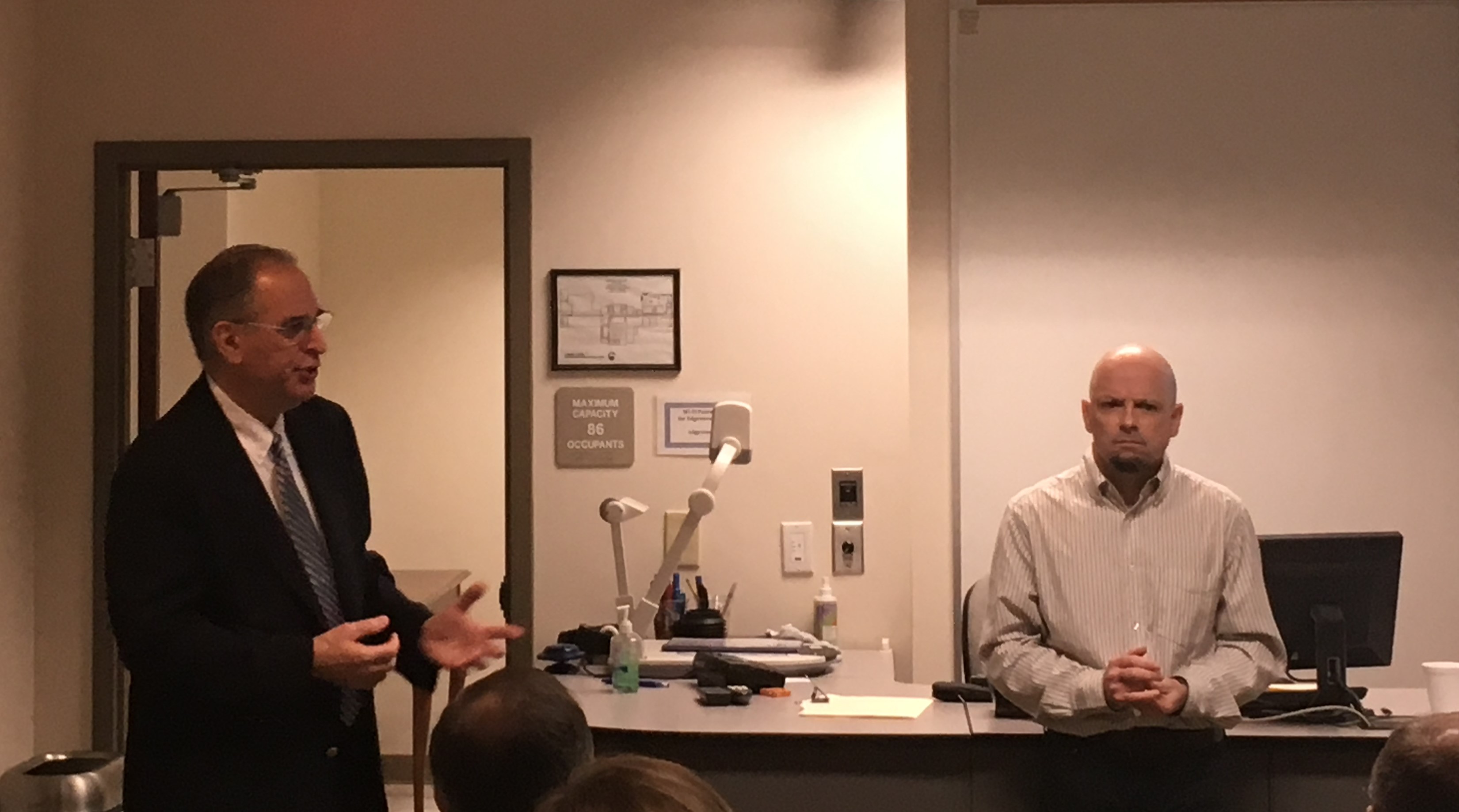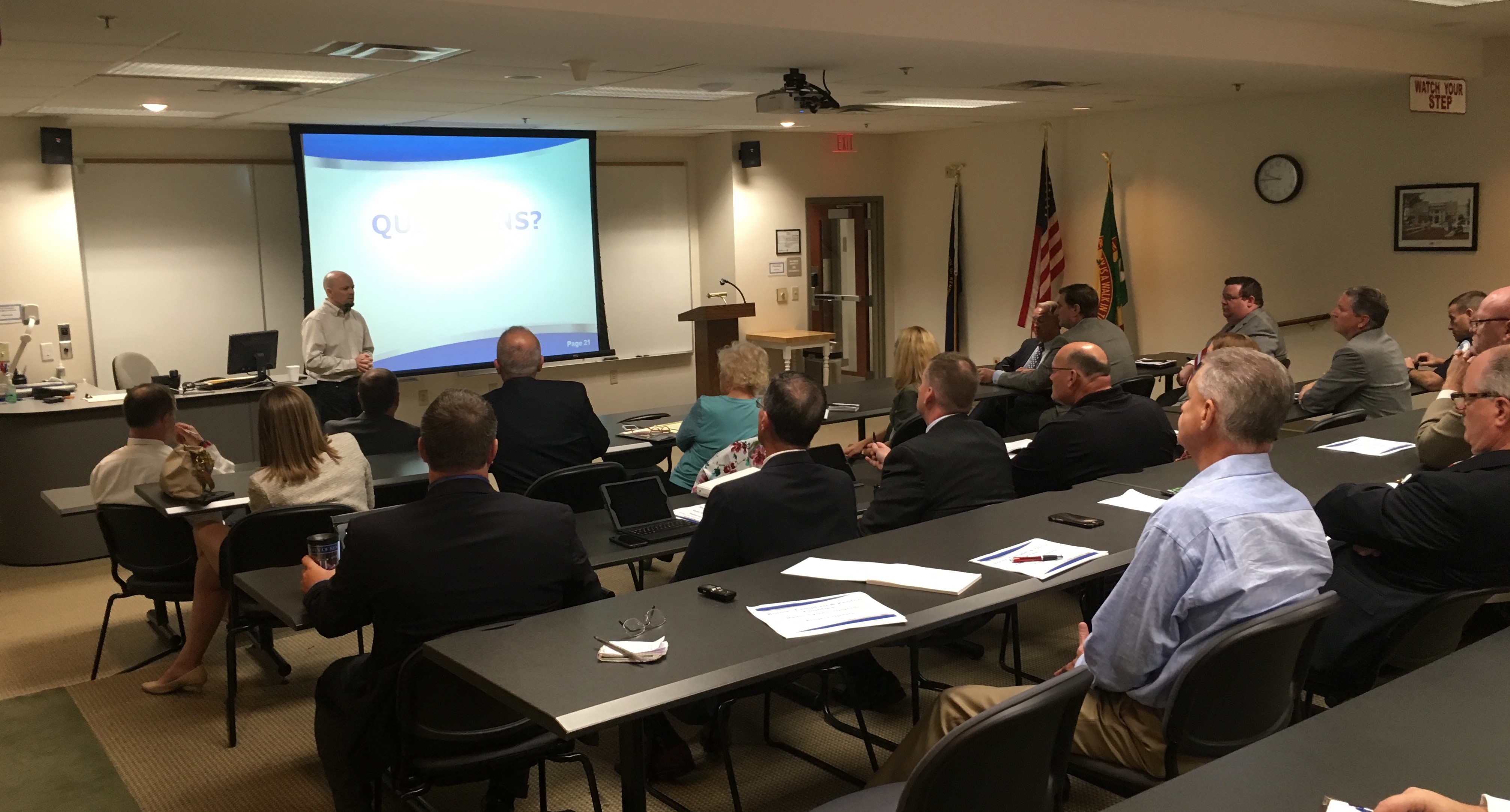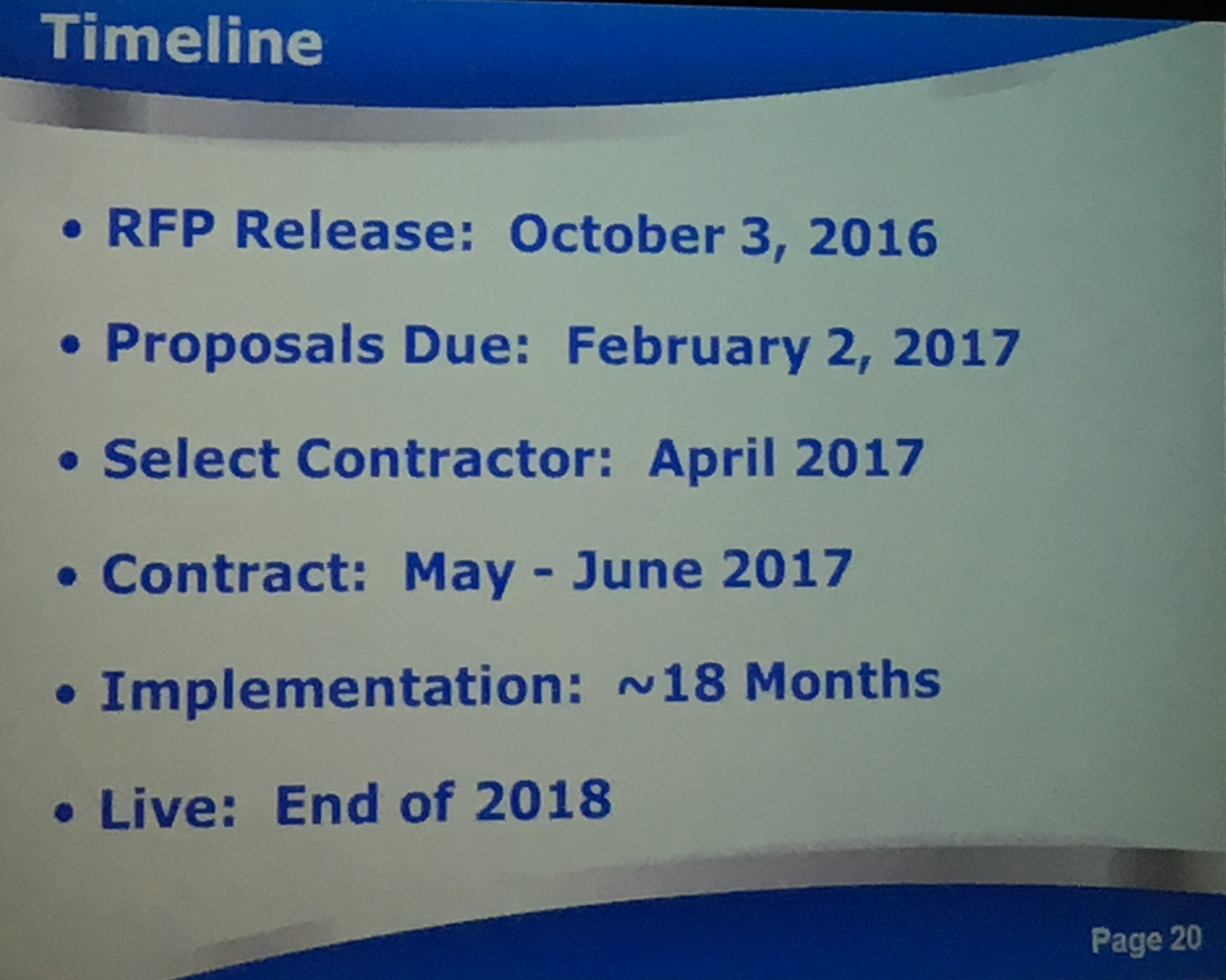By Mark Hansel
NKyTribune managing editor
Boone, Campbell and Kenton counties are about to embark on a $30 million radio system upgrade for first responders and other agencies that will change the way departments communicate within, and across, municipal borders.

Jack Hart of Tusa Consulting Services (left) and Keith Whitt of Trott Communications explain the radio system upgrade project at Monday’s education session in Edgewood (photos by Mark Hansel).
Kenton County Fiscal Court recently approved the move to the new system and Boone and Campbell counties signed off this week.
Keith Whitt of Trott Communications and Jack Hart of Tusa Consulting Services conducted an information session for county leaders and first responders in Edgewood Monday.
Trott Communications was contracted by Kenton County in 2014 to review its systems and make recommendations, while Tusa Consulting was performing similar work for Boone and Campbell counties. When it was determined a regional system was the best solution, the two companies began to work together.
Most of the radio equipment in the region is at or near the end of its shelf life and, in some cases, equipment is cannibalized because parts are no longer available.
“Sometimes they have to beg, borrow and steal to find the parts to keep it up and running,” Whitt said. “The portion of the systems that aren’t at that point yet, will be by 2019.”

Elected officials and first responders from Boone, Campbell and Kenton counties listen to a description of the radio system upgrade project in Edgewood Monday.
Another issue found in the evaluation of Kenton County’s current system is gaps in coverage. Mobile devices inside of vehicles generally get pretty good coverage, but handheld devices, or those worn on the body are not as effective.
Systems in Boone and Campbell counties have similar issues.
There are also not enough channels to provide the capacity needed to operate equipment today using the current system and that challenge will become greater over time.
Currently, law enforcement officers generally use UHF to communicate and fire departments use VHF, so they can’t speak to each other by radio in the field.
A recent local example of the challenges this creates occurred in 2012, with the tornadoes in Piner, Kentucky. First responders from around the region were in the area and were within close proximity of each other. Communication among departments by radio, however, was impossible, which hampered rescue and recovery efforts.
“The requirements are really pretty straightforward, we have to improve and fix the coverage,” Whitt said. “We need more channels – users need that capacity in order to take care of their operations.”
One option was to rebuild the current UHF/VHF system and provide the necessary upgrades, but that would not solve the problem of interagency communication. The other option, which the counties have signed off on, is to convert to a 700/800 megahertz (MHz) P25 Trunking system.
A trunked system provides a pool of RF channels that are assigned on demand. It supports many more talkgroups than dedicated RF Channels.
It uses a digital trunking protocol designed specifically for public safety and provides support for 1,500 to 2,000 users. It has multi-vendor support and intraoperability (police and fire on the same system), as well as interoperability (allows for communication with other agencies).
Put simply, the P25 Trunking System allows more users to communicate effectively among more agencies across a wider range and it is anticipated to be functional, with equipment upgrades, for decades.
Communities throughout the region have begun to install, or are considering, the switch to a trunked system.
The flexibility of this type of system was among the more exciting elements for those in attendance at the information session. With the heightened possibility of domestic terrorism today, the ability to communicate between and among agencies is even more critical.
The idea that a CVG Police officer could communicate with a Cincinnati fire department or a public utilities worker in Boone County could request assistance from an agency in Indiana in an emergency was described as “a game changer.”
As one first responder said, Northern Kentucky is “just not prepared” to handle an emergency that would require a coordinated response from agencies across the region.
One important point of emphasis is that the upgrade will not include a merger of public safety communication (911) dispatch centers. Each entity that currently operates a 911 dispatch center in Northern Kentucky will continue to function independently, but its first responders will use a shared system that allows for vastly improved communication between departments.
Each county will also purchase equipment for its agencies, such as radios and hand-held communications devices from a wide range of vendors. This will allow the counties some flexibility in choosing the type, and amount, of equipment needed for their various agencies.
The purchase of those devices is still a year or more away, but vendors were on hand at a follow-up session Monday to give those in attendance an opportunity to see some of the equipment.
Things are moving quickly for a project of this scale, but the system is not expected to go live for more than two years, so the equipment used in the field will be purchased as late in the process as possible. This ensures the counties will get the most up-to-date equipment and take full advantage of warranties.
Kenton County was prepared to release its RFP on August 1, but as the other counties expressed an interest in the system that date was moved back.
The support for the system among the fiscal courts and first responders has been virtually unanimous, which will allow for an expedited implementation schedule.
Kenton County Judge/Executive Kris Knochelmann praised his counterparts, Gary Moore in Boone County and Steve Pendery in Campbell County, and their teams, for helping to move the collaboration forward.
“I know that over the next year and a half it’s not always going to be perfect, there are going to be stumbling blocks,” Knochelmann said. “As long as we expect that to happen, I think that we’ll get through them a lot quicker and the public will be a lot happier and our first responders will have the equipment that they need.”
Several elected officials at the information system called the implementation of the system, “The most important thing we will ever do” for our communities.
The system is not cheap but, as one official pointed out, updating the existing system would be expensive as well – and less effective.
Savings will be realized through the sharing of costs for design, project management, control systems and maintenance.
The estimate for Kenton County is about $10 million, slightly more than $5 million of which would be used to implement the system. The other $5 million will be used to purchase equipment, including the handhelds and other devices used in vehicles by first responders in the field.
The individual departments that use the devices will purchase that equipment.
There will likely be a slight variation in price, depending on which vendors are used and how much equipment is purchased by an individual county.
Each county, however, will be responsible for costs associated with installation of the communications network within its borders. A few towers near county lines might be utilized across the network, but for the most part, the initial equipment and expenditures are expected to be similar.
The counties plan to release an RFP on Oct. 3 and proposals are due Feb. 2. A contractor is expected to be selected in April, with the goal of having a contract in place by June.
Implementation is expected to take approximately 18 months, with a goal of going live with the system by the end of 2018.
Contact Mark Hansel at mark.hansel@nkytribune.com

















